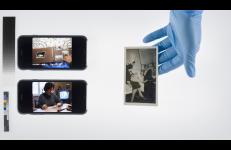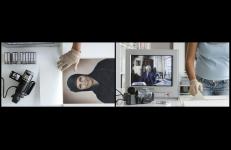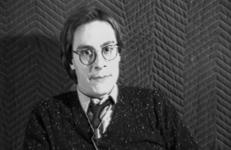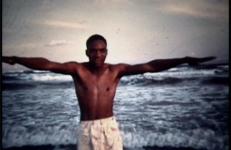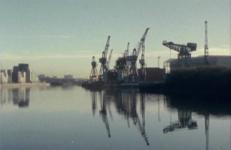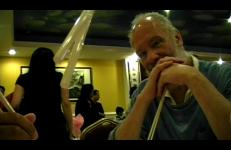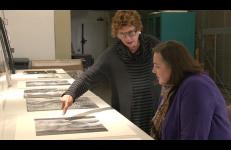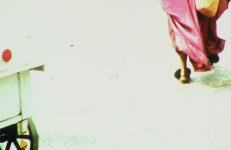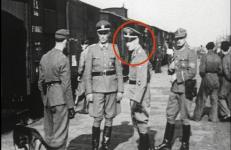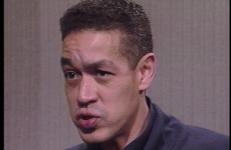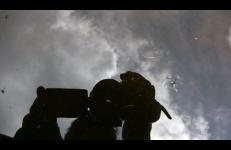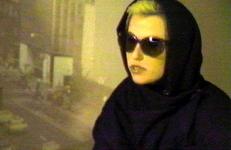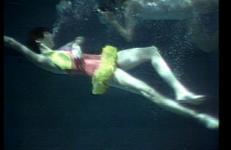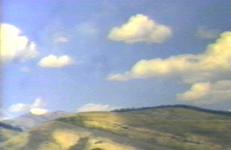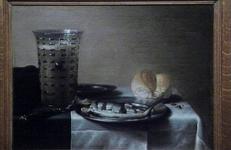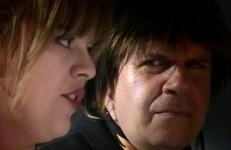In okay bye-bye, so named for what Cambodian children shouted to the U.S. ambassador in 1975 as he took the last helicopter out of Phnom Phenh in advance of the Khmer Rouge, Rebecca Baron explores the relationship of history to memory.
Photography
Taking the idea of loss and dispossession as a starting point, this second reflection on photography and its people looks at the individual’s position within the context of war and how photographs become the sole record of that displacement, at the risk of them being dispersed as well.
On Photography People and Modern Times is the outcome of three years of research on photography conducted by the artist in Lebanon, Jordan and Egypt during the founding years of the Arab Image Foundation (AIF).
Craig Owens (1950-1990) was a critic who wrote and lectured extensively on contemporary art. He showed particular interest in the issues of photography, postmodernism, feminism, and Marxist thought. A former associate editor for October and senior editor for Art in America, as well as professor of art history at Yale University and Barnard College, his writings were collected in Beyond Recognition: Representation, Power, and Culture (1994). Owens died of an AIDS-related illness in 1990.
Partially Buried Continued is a meditation on ways in which one’s associations to history, location, and genealogy become tangled in a subjective web which makes it complicated to separate history from fiction.
Petrolia takes its name from a redundant oil-drilling platform set in the Cromarty Firth, Scotland. The film looks at the architecture of the oil industry along the Scottish coastline where oil and gas supplies are predicted to run dry in the next forty years.
As I rummage through a stack of photos the memories of this and that plus who’s what and where rush in helter skelter. There’s a lot to swallow on screen and off (most of it from Oriental kitchens) but there are dashes of the even more exotic as the viewer glimpses renderings of the indigestible here and there (but mostly above and beyond!).
Ingrid Pollard is a photographer living in London. Her photographic works, generally of people and landscape, serve to provide a human context for issues of transmigration and “fleeting” identity. Combining personal photographs with traditional views of the English countryside, Pollard questions as well as reconstructs the concept of “Britishness.” In doing so, Pollard also scrutinizes the location of the “other,” and contrasts actual physical similarity or material likeness of people and places with perceived or socially constructed difference.
Richard Prince appropriates images from commercial advertising and travelogues for his photographs. Choosing these images for their melodramatic, super-real power, he then isolates their stylistic realism to accentuate its rhetoric. In this portrait/performance, Prince narrates experiences that demonstrate his extreme sensitivity to appearances and context. He relates the event of buying his first car as the imprinting of a certain aesthetic impression.
This title is also available on Crossover Series.
Re-Animation 3,4, & 2 are short animations created by looping images of dead insects taken from the artist’s own amateur entomological collections. Each frame of video within a loop is an image of a separate insect in its own distinct contortion. The variety of contortions, coupled with the similarity between insects of the same species, creates the stop motion movement of an individual insect in the final video.
Within the historic district of Saida, Lebanon, a boy learns to capture light.
Cast: Husni Tutunji
Camera: Abdallah al-Bunni
Within the historic district of Saida, Lebanon, a boy learns to capture light.
Cast: Husni Tutunji
Camera: Abdallah al-Bunni
8 stereoscopic slides taken to the jk-104 optical printer, shot frame by frame, by hand. This is the first hand processed color film I've made. The slides were found at a thrift store in Milwaukee, WI in 2009. They are of Cuba between 1948 and 1950 taken by an army officer while accompanied by his family. Their touristic gaze is reclaimed, by fragmenting their photographs into new possibilities of the frame, and reviving the bodies that may have perished by the revolution in 1952.
Respite consists of silent black-and-white films shot at Westerbork, a Dutch refugee camp established in 1939 for Jews fleeing Germany. In 1942, after the occupation of Holland, its function was reversed by the Nazis and it became a 'transit camp.' In 1944, the camp commander commissioned a film, shot by a photographer, Rudolph Breslauer.
Juan Sanchez explores his Puerto Rican heritage and the issue of Puerto Rican independence through his work as an artist and writer. Combining painting, photography, collage, and printmaking techniques, Sanchez’s art joins images of contemporary barrio life with memories of Puerto Rico, and addresses a fragmented Latino community fraught with political resistance and cultural alienation.
Interview by Bibiana Suarez.
A historical interview originally recorded in 1990.
Andres Serrano was born and raised in New York. At fifteen he dropped out of high school. A few years later he attended the Brooklyn Museum School and studied painting and sculpture. After two years, Serrano decided that neither of these art forms were appropriate for his particular vision, and began to make photographs. Serrano’s work came to the attention of the general public as part of the controversy surrounding the issue of censorship and the NEA.
In Shayne's Rectangle, Dani Leventhal's moving and mysterious prayer for healing, a horse farm and a casual poolside dissection are the nodes between which a series of patiently taken sharp turns maneuver through moods both intimate and detached. The camera pursues, observes, offers, reflects, and is reflected. Things clear and things indistinct interact rhythmically, resonantly, producing a volatile and haunting visual prosody.
— Jeremy Hoevenaar
Cindy Sherman received an MFA from the State University of New York at Buffalo in 1976, where she studied photography. During this time she was also involved with HallWalls, an alternative gallery space in Buffalo. She is best known for her black and white Untitled Film Stills, which she made in the late 70s and early 80s. In carefully designed settings, Sherman placed herself, using costumes, wigs, and makeup, in various scenarios suggetive of B-movies from the 1950s.
Laurie Simmons’s photographs are brought to life in Laurie Simmons: A Teaser, MICA-TV’s portrait of the acclaimed photographer. In the early 1980s, Simmons focused on underwater photographs of women, which suggested the stylized tableaux of Esther Williams’s water ballets. Taping through a glass window in the bottom of a swimming pool, Michael Owen and Carole Ann Klonarides recorded Simmons while she was shooting her models.
Taking its title from the sea nymphs in Homer’s Odyssey—the treacherous spirits whose sweet voices lured sailors to their death upon the rocks—Sirens presents four hallucinatory scenes, visual puns authored by a mischievous agent. Mocking laughter that shatters the illusion and causes viewers to doubt the assumptions implicit in their viewing disrupts stills of what seem to be unpopulated landscapes.
Taking its title from the sea nymphs in Homer’s Odyssey—the treacherous spirits whose sweet voices lured sailors to their death upon the rocks—Sirens presents four hallucinatory scenes, visual puns authored by a mischievous agent. Mocking laughter that shatters the illusion and causes viewers to doubt the assumptions implicit in their viewing disrupts stills of what seem to be unpopulated landscapes.
According to Harun Farocki, today's photographers working in advertising are, in a way, continuing the tradition of 17th century Flemish painters in that they depict objects from everyday life - the "still life". The filmmaker illustrates this intriguing hypothesis with three documentary sequences which show the photographers at work creating a contemporary "still life": a cheese-board, beer glasses and an expensive watch.
Storyteller recomposes aerial shots from the Las Vegas casino skyline to create a slick, artificial world, reminiscent of science fiction. At first glance, the viewer might think of jewelry-like space ships floating slowly through the universe. When the camera zooms in on buildings and architecture, the detailed glitter and kitsch of the city hypnotically reveals something of pure beauty and madness.





